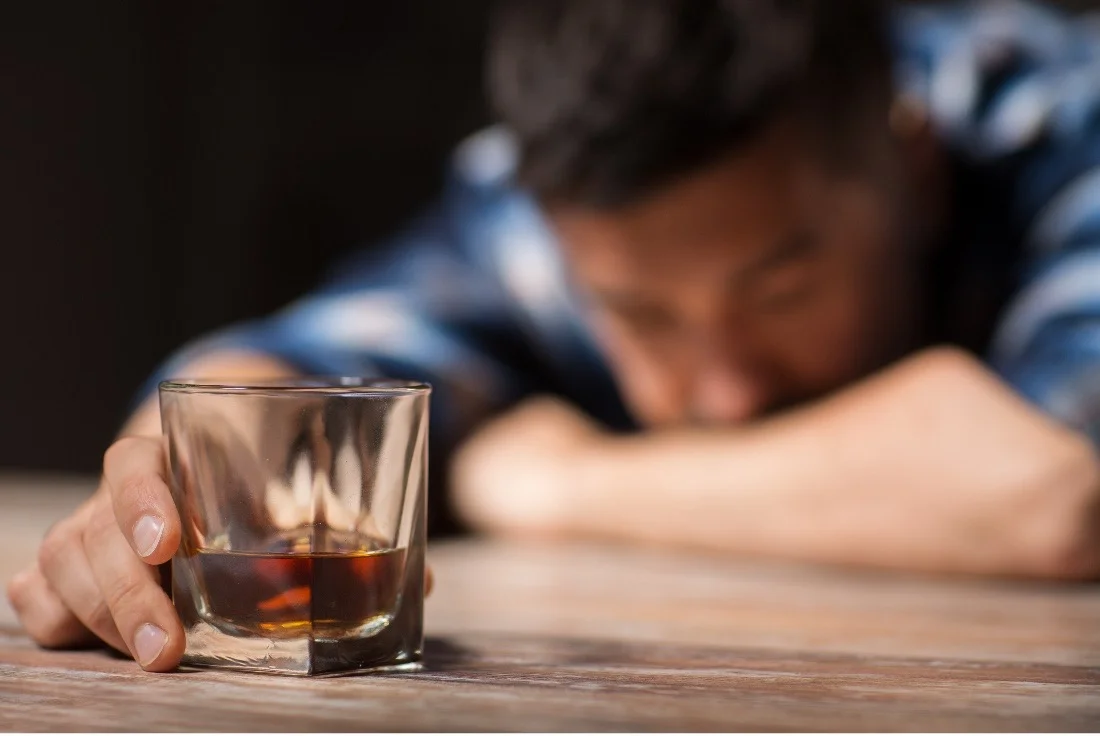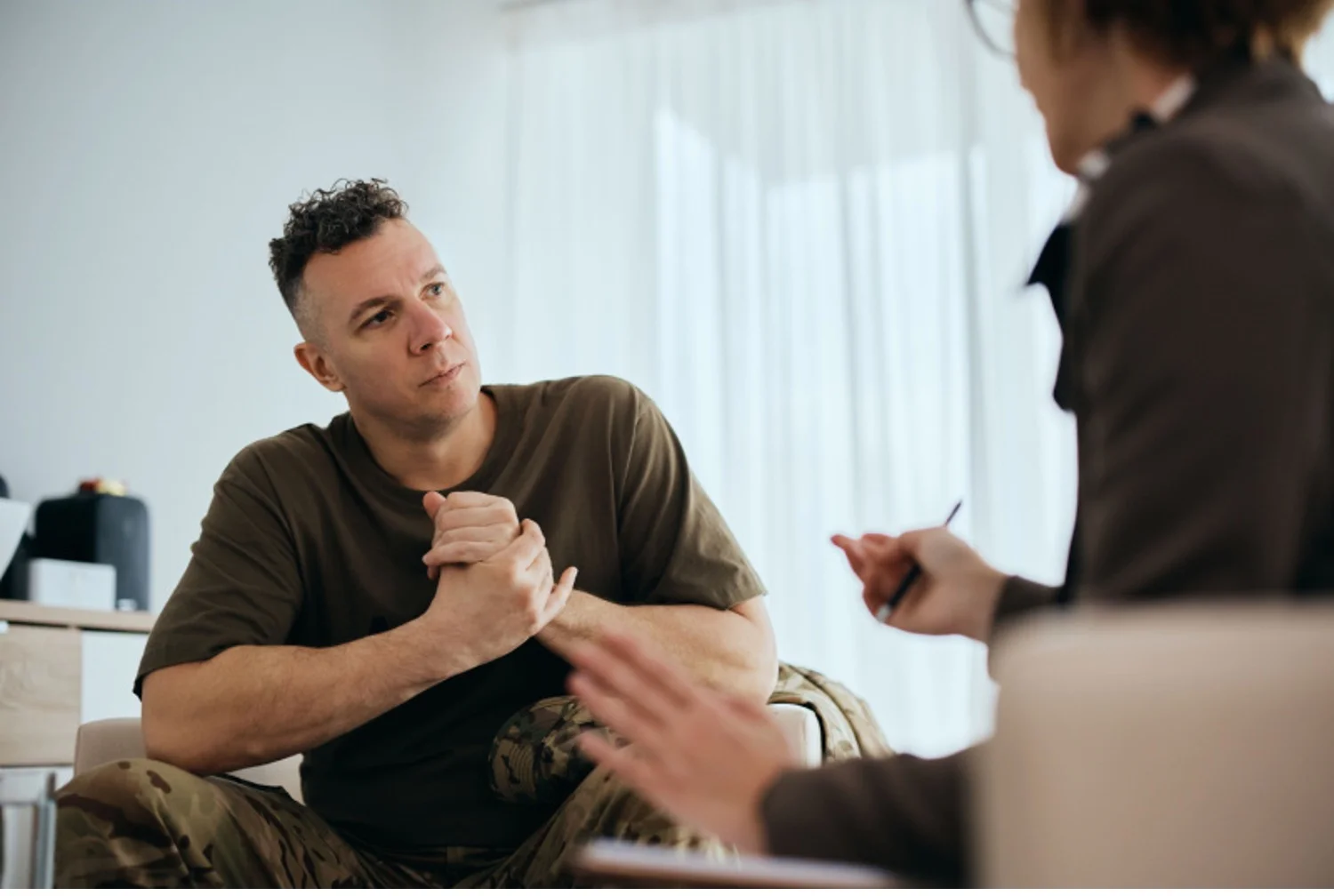Exploring the Intersection of PTSD and Addiction, plus Treatment Options
Post-traumatic stress disorder, better known as PTSD, is a serious mental health condition that can have many negative consequences.
Tragically, one of these consequences is a high risk of developing a substance use disorder. PTSD and addiction actually have a very close relationship, and it is common for individuals to suffer from both.
Understanding PTSD

PTSD is a mental health condition caused by experiencing or witnessing a traumatic event/circumstance or a series of events/circumstances. PTSD can have significant and negative impacts on an individual’s mental, physical, social, and spiritual well-being.
PTSD is one of the most common serious mental health conditions. It is estimated that 3.5% of American adults experience PTSD every year and that up to 11.6% of Americans will suffer from PTSD at some point in their lives.
Most early research into PTSD focused on military veterans in the wake of World War I and World War II. As a result, public awareness of the disease is closely associated with military service.
While it is certainly true that war experiences can cause PTSD, the disease is not limited to military members. In fact, most PTSD sufferers have not served in the military at all.
Types of experiences that commonly lead to PTSD include:
- Bullying
- Childhood abuse or neglect
- Combat or war
- Crime
- Death
- Domestic abuse
- Historical trauma
- Human trafficking
- Incarceration
- Intimate partner violence
- Life-threatening situations
- Long-term captivity
- Natural disasters
- Physical assault
- Rape and sexual assault
- Serious accidents
- Terrorist acts
- Violence
Every year, millions of people experience trauma and do not develop PTSD. Factors that can increase the chances of an event or circumstance causing PTSD include:
- Previous traumatic experiences, especially during childhood.
- Getting injured or seeing people get injured.
- Feeling horror, hopelessness, or extreme fear.
- Having inadequate or no social support after the event or events occur.
- Extra stress after the event.
- Personal or family history of mental illness and/or substance abuse.
Some diagnostic manuals and mental health professionals divide PTSD into two forms: “Normal,” or “simple” PTSD, and “complex” PTSD (C-PTSD). C-PTSD is a result of prolonged and/or repeated trauma, especially when the trauma occurs in the context of relationships or families.
Not all mental health professionals distinguish between complex and normal PTSD. But those who do generally believe there to be symptoms that are unique to complex PTSD.
Common Symptoms of PTSD
Common symptoms of normal PTSD include:
- Re-experiencing the traumatic event through intrusive memories, nightmares, or flashbacks.
- Physically avoiding or avoiding talking about situations, people, places, and things that were involved in or remind the individual of the traumatic event.
- Negative changes in thoughts and mood, especially when the individual is reminded of the traumatic event.
- Negative beliefs about oneself and/or others.
- Feelings of detachment.
- Lack of interest.
- Difficulty experiencing positive emotions.
- Distorted blame.
- Being easily startled.
- Difficulty sleeping.
- Having an exaggerated or extreme startle response.
Symptoms of Complex PTSD
Symptoms that frequently occur in cases of complex PTSD include:
- Emotional dysregulation.
- Intense and/or unpredictable emotional responses and reactions.
- Difficulty managing or controlling emotions.
- Emotional instability.
- Distorted self-concept.
- Negative self-perception.
- Low self-esteem.
- Feelings of shame.
- Feeling fundamentally flawed or damaged.
- Interpersonal difficulties.
- Difficulty trusting others.
- Difficulty forming health attachments.
- Difficulty maintaining healthy boundaries.
- Changes in self-perception.
- Feelings of isolation or alienation.
- Feeling that one’s identity has been lost or shattered as a result of the trauma.
Understanding Addiction

Addiction, known in academic and treatment circles as a use disorder, is a disease that has both mental health and medical health components. Either a substance or a behavior can be the focus of an addiction.
In order to have an addiction, an individual must meet a number of criteria, including:
- The individual has psychological and/or physical cravings for a specific substance (typically drugs or alcohol) or a specific behavior (such as gambling or viewing pornography) that are eased when the substance is used or the behavior is engaged in.
- The individual experiences a collection of unpleasant symptoms known as withdrawal when they stop taking the substance or engaging in the behavior. This is known as dependence.
- The individual experiences negative consequences or engages in negative behaviors because of their substance use or behavior, and they continue to use the substance or engage in the behavior despite these often-worsening negative consequences.
No one intends to develop an addiction. Rather, addiction is an unintended and undesired side effect of repeated substance use or behavior.
Sadly, addiction is very common in those who experience mental or emotional pain because many substances and behaviors temporarily alleviate the pain.
What Is the Relationship Between PTSD and Addiction?
PTSD and addiction have a tragically close relationship. Studies have found that 46.4% of individuals with PTSD will also have a diagnosable substance use disorder and that 75% of individuals who have survived abuse or trauma report problematic alcohol use. This relationship is described as bidirectional, which means that PTSD can cause or worsen addiction, and addiction can cause or worsen PTSD.
“PTSD often leads individuals to use substances as a way to self-medicate and cope with distressing symptoms. Substance use may temporarily alleviate anxiety, numb emotional pain, or help with sleep disturbances,” says psychiatric mental health nurse practitioner (PMHNP) Valerie Puffenberger.
“Additionally, traumatic experiences can alter brain chemistry, increasing the vulnerability to addiction. The cycle of addiction can further worsen the symptoms of PTSD, creating a vicious cycle.”
PTSD and addiction can quickly send people on a downward spiral. Consider this example:
- An individual discovers that alcohol eliminates or dulls the symptoms of PTSD.
- They begin to drink more, thinking it will provide them with more relief. This is what is known as self-medication.
- Quickly, they develop a tolerance and need to consume greater and greater amounts of alcohol to feel the same relief.
- Unfortunately, substance use causes PTSD symptoms to worsen in number and severity, especially after long-term use.
- As their symptoms worsen, they drink to self-medicate, which makes their PTSD—and the urge to drink—even worse.
Ultimately, PTSD and addiction can lead to a dangerous and deadly cycle of worsening symptoms and self-medication.
Effects of PTSD and Addiction
The combined effects of PTSD and addiction can have major negative impacts on virtually every aspect of an individual’s life, including their mental health, relationships, and physical health.
Some of the most common and serious mental health effects of PTSD and addiction include:
- Intense stress and anxiety
- Social isolation and difficulty engaging in normal activities
- Negative mood
- Irritability, difficulty concentrating, and sleep loss
- Emotional numbing or struggling to feel emotions
- Compulsive behavior
- Mood swings and dysregulation
- Escapism
- Depression
Some of the most common and serious relationship effects of PTSD and addiction include:
- Isolation
- Difficulty communicating
- Anger and irritability
- Conflicts and misunderstandings
- Trust issues and distrust
- Neglect
- Codependency
- Emotional distance
Some of the most common and serious physical health effects of PTSD and addiction include:
- Hypervigilance-related physical tension, headaches, and fatigue
- Sleep disturbances
- Chronic pain
- A wide variety of organ damage
- Compromised immune system
- Nutritional deficiencies
- Overdose
- Death
Common Treatment Approaches for PTSD and Addiction

Every case of PTSD and addiction is different, and therefore each must be treated differently. However, some treatments have proven to be especially effective at treating co-occurring PTSD and addiction.
Trauma-focused therapies, such as EMDR and CBT, can address both emotional and psychological impacts of trauma:
- EMDR, short for eye movement desensitization and reprocessing, requires patients to recall traumatic events while engaging in bilateral stimulation, such as following hand motions. The aim of EMDR is to help individuals reprocess trauma and reduce its emotional impacts.
- CBT, short for cognitive behavioral therapy, helps patients identify negative patterns of thought and behavior so they can change said patterns. CBT helps PTSD and addiction patients challenge and reframe beliefs about themselves and their trauma.
Dual-diagnosis programs are a form of rehabilitation designed to address co-occurring mental health and substance use disorders at the same time. These programs understand the complex and intricate relationship between addiction and PTSD and provide integrated treatment.
- Inpatient dual-diagnosis programs require patients to reside at a facility where they receive treatments during the day. Inpatient programs can be expensive, but they provide the greatest likelihood of a successful recovery from addiction and PTSD.
- Outpatient dual-diagnosis programs require patients to attend treatment sessions several days a week while residing elsewhere. Outpatient programs are generally less expensive, allowing patients to continue performing personal, familial, or professional responsibilities. However, they tend to provide patients with a lower chance of successful recovery than inpatient programs.
Managing Triggers
The symptoms of PTSD and addiction are often triggered by certain events, people, or places. While it’s impossible to completely avoid or eliminate all triggers, there are healthy ways to mitigate their effects.
“First, it’s important to identify triggers and create a plan to avoid or minimize exposure to them. Developing healthy coping mechanisms, such as deep breathing, grounding techniques, or engaging in activities like art or journaling, can help manage anxiety and cravings,” says Puffenberger.
“Seeking support from therapists, support groups, or loved ones who understand the challenges can provide a strong network of support. Engaging in relaxation techniques and self-care activities regularly can also contribute to overall well-being.”
Living with Addiction and PTSD in Recovery
Relapse, either as a return to substance use or a reappearance of PTSD symptoms, is unfortunately common, but it can be avoided.
Tips and strategies for preventing addiction and PTSD relapse include:
- Participate in support groups: Support groups such as Alcoholics Anonymous (AA) and Narcotics Anonymous (NA) provide a sense of community and belonging. They also keep participants motivated and accountable and serve as a source of useful, real-world advice.
- Continue attending therapy: Both individual and group therapy can continue to provide patients with valuable insights and training long after rehab is finished. Therapy can also help patients adjust to changes in their lives that might otherwise trigger post-traumatic episodes or substance use.
- Actively engage with family and friends: Addiction and PTSD are both worsened by loneliness. A strong social network helps fill a void that might otherwise be filled with drugs and alcohol. Family and friends are also excellent sources of encouragement, comfort, and other forms of relapse-prevention aid.
- Continue to make positive lifestyle changes: Eating a balanced diet, engaging in a routine exercise regimen, practicing daily self-care, and participating in healthy hobbies are all examples of positive lifestyle changes that reduce the risk of relapse.
Get Professional Help for PTSD and Addiction
If you or a loved one is suffering from the joint scourge of PTSD and addiction, it can seem as if your life has become unmanageable. Fortunately, help is out there.
Legacy Healing Center is dedicated to helping patients recover from addiction and mental health disorders like PTSD. We can help you or your loved one regain sobriety, overcome PTSD, and start living a more fulfilling life.
We use a three-pronged approach that focuses on using the right psychotropic medications, evidence-based psychotherapy, and peer support. We offer both inpatient and outpatient dual-diagnosis programs to accommodate your specific ailments and needs.
If you are looking for addiction and PTSD treatment today, look no further. Call 888-534-2295 to speak with a staff member at Legacy Healing Center.
PTSD and Addiction FAQs
How does sexual addiction relate to PTSD?
Sexual addiction relates to PTSD bidirectionally. Both PTSD and sex addiction can cause each other, and each can worsen the other.
Sex can serve as a coping mechanism for trauma, a means to reenact that trauma, or even a means to fulfill a desire for self-destruction caused by trauma. In cases where both sex addiction and PTSD are present, both need to be treated at the same time to provide the greatest chance of a successful recovery.
What is complex PTSD and how does it contribute to addiction?
Complex PTSD, or C-PTSD, is caused by repeated or ongoing trauma. Complex PTSD is most likely to occur in cases where the trauma was caused by family members.
C-PTSD contributes to addiction in much the same way as normal PTSD. However, treating complex PTSD and addiction poses additional challenges due to a higher number and severity of symptoms.
Can PTSD trigger addiction in individuals?
PTSD can trigger addiction in individuals. Typically, this starts when an individual uses substances to dampen or eliminate PTSD symptoms through self-medication.
Sadly, substance use worsens PTSD symptoms and creates a tolerance, which leads individuals to continually increase their substance use. This in turn often causes a downward spiral into full-blown addiction.
What are common treatment approaches for PTSD and addiction?
The most effective and commonly used treatment approaches for PTSD and addiction are trauma-focused therapies and dual-diagnosis programs.
Trauma-focused therapies such as eye movement desensitization and reprocessing (EMDR) and cognitive behavioral therapy (CBT) help patients reframe their trauma and minimize the impacts it has on their emotions and lives. Dual-diagnosis programs combine medications and therapies to help patients achieve sobriety from drugs and alcohol and recover from PTSD episodes.
Sources
- U.S. Department of Veterans Affairs. (n.d.). PTSD: National Center for PTSD.
- International Society for Traumatic Stress Studies. (n.d.). Traumatic Stress and Substance Abuse Problems.
- National Institute of Mental Health. (2023). Post-Traumatic Stress Disorder.
- American Psychiatric Association. (2022). What Is Posttraumatic Stress Disorder (PTSD)?
- Psychology Today. (2014). Sex Addiction: A Response to Trauma?






